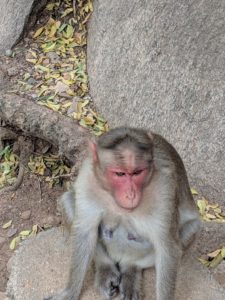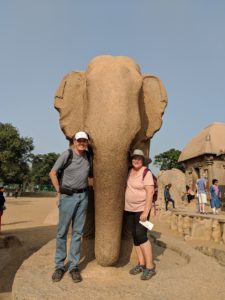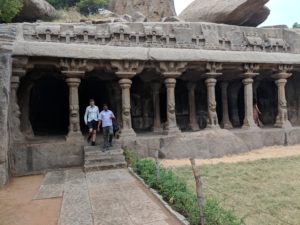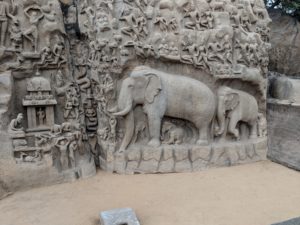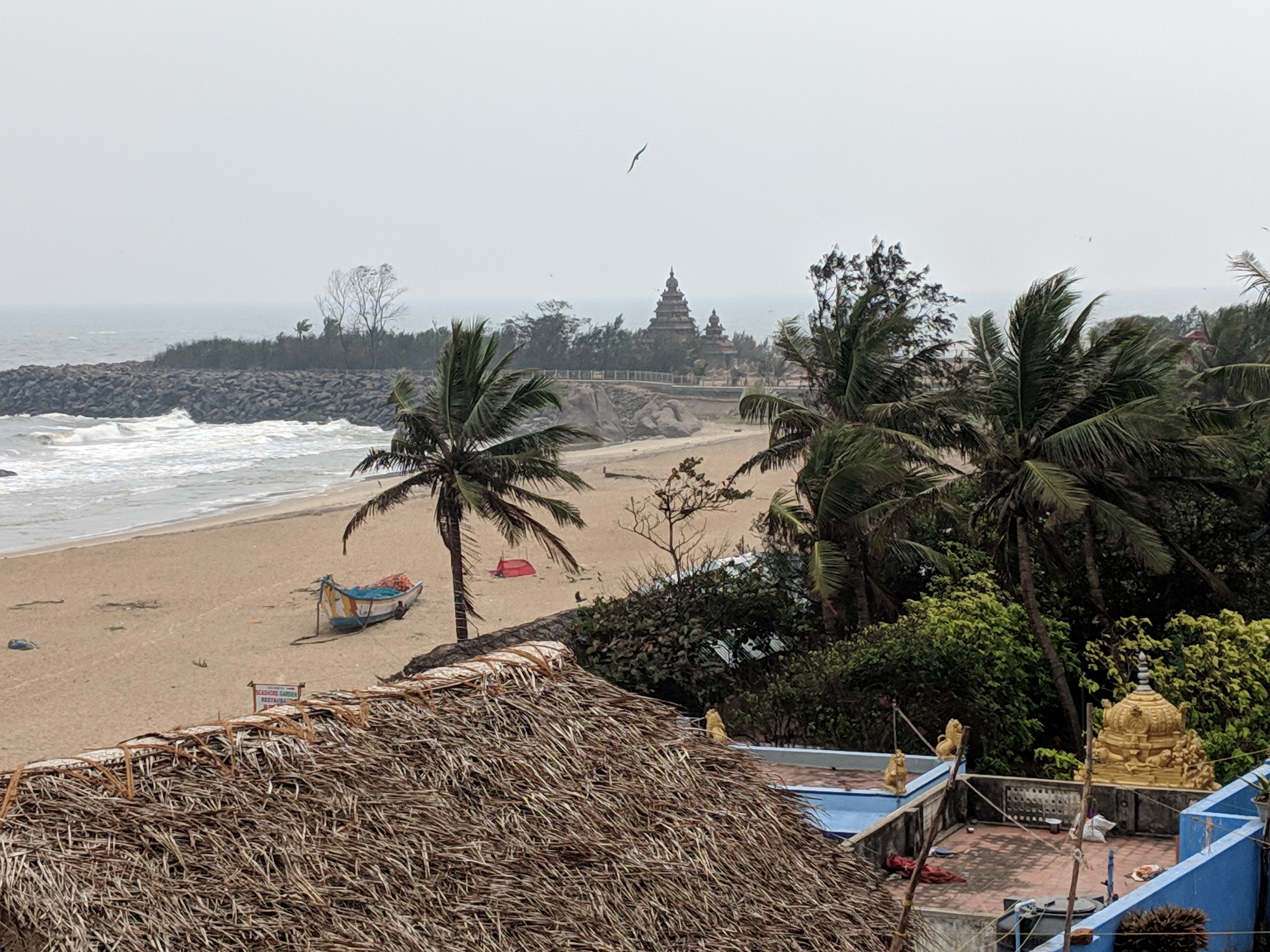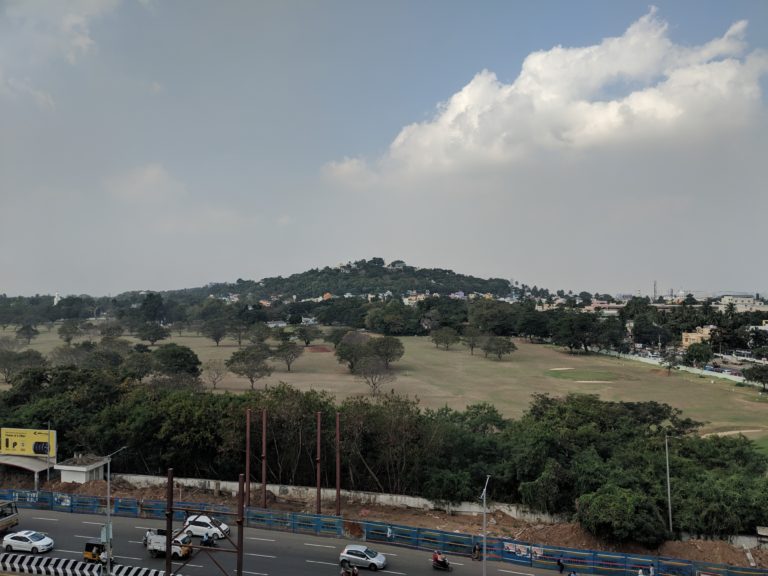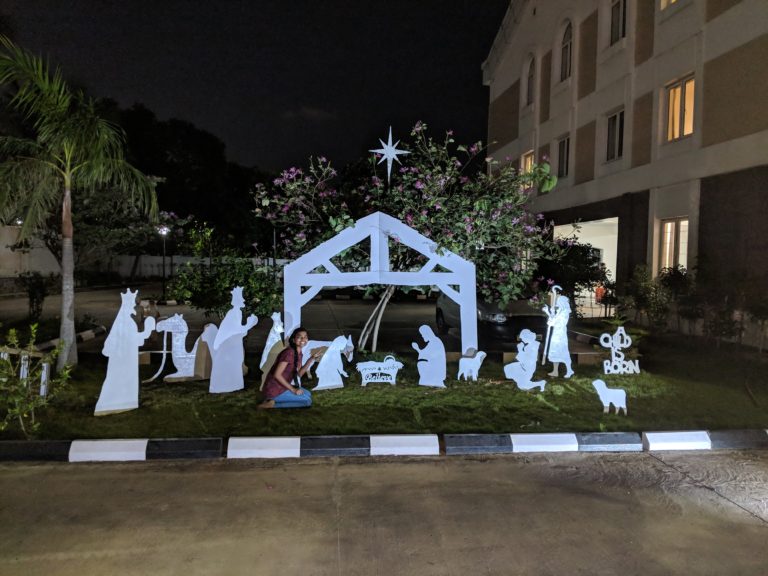Mahabalipuram (Mah HA ba LI pur um) or Seven Pagodas is an ancient site which dates to the 6th and 7th Century AD, located 35 miles south of Chennai. The area was ruled by the Pallava kings, for half a millennium in South India. These are amazing structures, hewn out of solid granite which comprise the low lying hills on this coastal region of Tamil Nadu. The sculptural buildings and depictions are of ancient Dravidian art and temple architecture.
Site is also known as Mamallapuram. The alternate name is attributed to the King Narasimhavarman I – he was an acclaimed wrestler.
Kings Mahendravarman I and his son Narasimhavaraman I (580 – 668 AD), are primarily responsible for the sculptures and monuments that are found in this large ancient city.
Mahabalipuram was a thriving seaport during its time. Coins from Persia, China and Rome have been recovered from the archeological record. Shore Temples (Featured Image), Arjun’s Penance and the 5 Rathas (Pagodas) stand out as some of the finest sculpture and buildings in the entire region.
Krishna (an avatar of Vishnu – god of compassion, tenderness and love) has a large granite boulder named after it — Krishna’s Butterball. This immense stone weighs approximately 250 tons and is perched precariously on a narrow rock base – it measures approximately 20 feet high by 15 feet wide. It is said – many legends – that the Pallava kings tried to move this thing using elephants and the Brits attempted to move it with modern day heavy equipment. As you see by the photos…there it stands today.
We had to be very careful with our belongings. The resident bonnet monkeys (pictured below) have learned that humans like to carry food with them. Elder Gibson usually carries snacks in his backpack. As he was walking the trails at “Mahab”, he felt a firm tugging on his pack. Thinking that it was Sister Gibson attempting to procure some trail mix, he turned around and saw the culprit – a hungry simian attempting to pilfer our snacks. She was turned away, empty handed.
(Sources – Britannica, VZIndia, Wikipedia and our own eyes)
